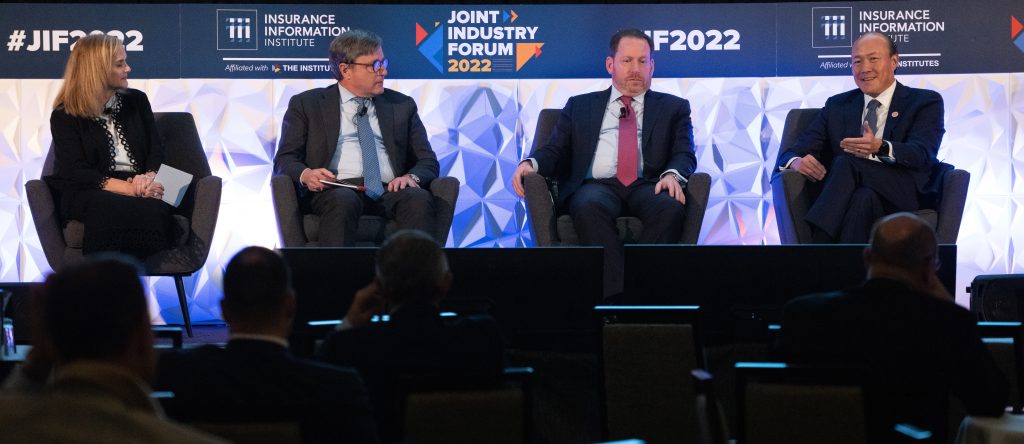Florida and Legal System Abuse Highlighted at JIF 2022

By Max Dorfman, Research Writer, Triple-I
Florida took center stage at JIF 2022, as a group of panelists discussed growing courtroom costs and the rise of legal system abuse.
“Legal system abuse is a combination of factors, including social inflation, nuclear verdicts, third party litigation funding, tort reform pullback, cost shifting schemes, and attorney advertising,” opened Ronna Ruppelt, CEO of CLM & Claims Pages, who served as moderator.
Ruppelt added, “Florida is the poster child for legal system abuse.”
The panel analyzed the general landscape of these issues, and how Florida became the epicenter of many of these issues.
They noted that in Florida, roof and windshield claims are part of this cottage industry, driven by plaintiff fee recoveries more than the subject of the litigation itself. The costs of roofs have dramatically increased even in the past three years. This is not primarily driven by disasters.
“In 2021, Florida had 116,000 property insurance lawsuits pending,” Ruppelt said. “The state is on pace for approximately 130,000 in 2022.”
Most states only have a few hundred. California, the most populous state in the U.S., had a mere 3,500 property insurance lawsuits pending in 2021.
“The numbers highlighted are staggering,” said Fred Karlinsky, shareholder and global co-chair of Greenberg Traurig, LLP. “It’s been recognized at the highest levels of state government.”
With the recent gubernatorial election in Florida, this problem has only become more visible. Incumbent Ron DeSantis and his challenger (and former governor of Florida) Charlie Crist debated over the costs of roof replacement, as well as litigation over home insurance.
“There may be a $10,000 judgement award, but millions of dollars of fees,” Karlinsky said.
Indeed, the property insurance market has become similar to health care, with assignment of benefits (AOBs)—in which an insured signs their benefits over to the medical provider—getting paid by insurers. AOBs utilize unscrupulous contractors that come in before the insurers, and “make your home a disaster zone.”
“The insurers have no way to know what the damage was, and now they have to fight these claims,” Karlinsky added, noting that once the insurer enters the court system, it often results in nuclear verdicts.
“Florida is tougher for adjusters,” mentioned Joseph Blanco, the president of Crawford & Company. “After we confirmed up for Hurricane Irma, there have been billboards all over the place saying don’t believe adjusters.”
Attacking the credibility of adjusters, Blanco said, makes it very difficult for insurers. This only adds to unrealistic expectations for claims, making it more challenging to settle pre-litigation.
Though the panel recognized this kind of legal abuse began in the 80’s and experienced upward trends in the 90’s and early 2000’s, there were calls at the time for nationwide tort reform. However, the lawyers involved in these suits have become more sophisticated, making it even more challenging to confront this issue.
“The lawyers involved identify a theory of liability, find litigation funders, create advertisements, and then they go forum shopping,” said Harold H. Kim, the president of the Institute for Legal Reform, and the chief legal officer and executive vice president of the U.S. Chamber of Commerce. “They roll the dice to see if they can achieve a settlement or a nuclear verdict, which shifts the value of negotiations.”
“It’s so pernicious that the corporate community is in the crosshairs,” Kim added. “The stability of the rule of law and the ability to operate a business is critically challenging.”
The panelists agreed that problems surrounding legal abuse are only growing more significant.
“What we have seen is the use of plaintiff attorneys are moving out of Florida to you,” Karlinsky said. “AOBs and the roof phenomena are not just going to be in the large states. We’re seeing them all over the place. The plaintiff’s bar does not have the same restrictions as the insurance industry.”
“What happens in Florida doesn’t stay in Florida,” concluded Kim.





